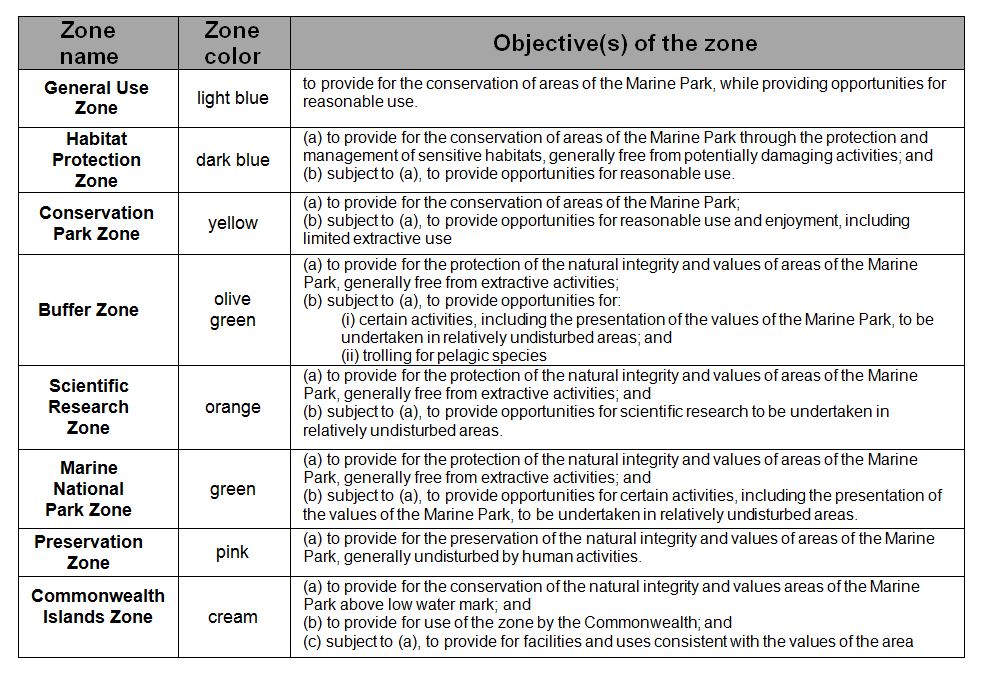

The difference between zoning by objective rather than zoning by activity is best explained by example; a ‘no-trawling’ zone may indicate clearly one activity is prohibited (i.e. all trawling is banned in that zone), but it may not be clear as to what other activities may be allowed or not allowed. The objective of the Habitat Protection Zone enables a range of activities that have (relatively) minimal impacts on the benthic habitat(s) to occur within that zone; for example, boating, diving, and limited impact research are allowed, as well as allowing some extractive activities like line fishing, netting, trolling and spear-fishing (i.e. some but not all, fishing activities). However the zone objective and related zoning provisions clearly prohibit bottom trawling, dredging or any other activity that is damaging to the sensitive habitats in that zone. In most oceans there are many existing or potential marine activities that need to be managed but many of these activities are complementary and can occur within the same zone; if zoning is used to address all existing activities (and ocean zoning is certainly one important tool to do so), then it is preferable that zoning be by objective rather than by each individual activity.
The Zoning Plan is a statutory document that includes all the specific details of the zoning (e.g. Zone objectives (see Resources below), the detailed zone boundaries, etc.). The Act provides the ‘head of power’ to prepare a zoning plan and includes a section on the Interpretation of zoning plans (section 3A) and details about the objects of zoning, what a zoning plan must contain and how a zoning plan must be prepared (sections 32-37A).
- If a zone objective has multiple parts, there must be a clear hierarchy within the objective. For example, if the objective is to provide for both conservation and reasonable use (as shown for most GBR zones - see Resources below), the second part is always subject to the first (i.e. reasonable use can only occur if it is subject to ensuring conservation).
- The GBR Zoning Plan also has a special ‘catch-all’ permit provision in (“any other purpose consistent with the objective of the zone…”). This provides for new technology or activities that were not known when the Zoning Plan was approved. It provides an important ‘safety net’ enabling an activity which is not in one of the two lists explained in BB1 to still be considered for a permit provided it is consistent with the zone objective.